With the effects of climate change becoming more evident every year, it’s clear that living a greener lifestyle is more important than ever. It’s not as difficult or as expensive as you might think, either. Here, we reveal simple changes you can make at home to reduce your carbon and water footprints and help ensure a healthy planet for future generations.
Originally published February 24, 2017; Updated on February 11, 2021

Plant Native Species
Instead of filling your garden with tropical plants, opt for native species that can adapt to the local climate. Your yard will be easier to maintain and will create a friendlier habitat for wildlife. Strategically planted trees and shrubs will also help regulate your home’s temperature. Not sure where to get started? Check out these native plants in Canada, broken down by province.
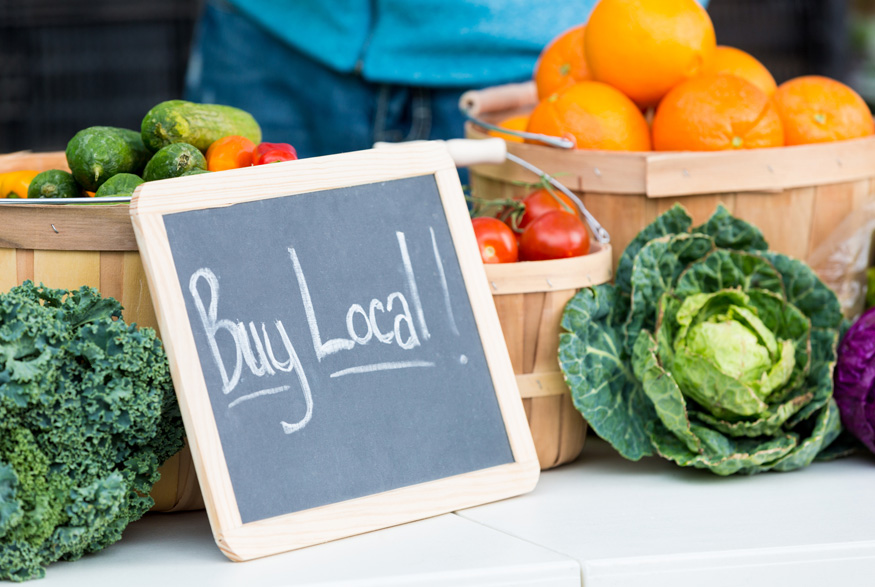
Buy Local
While it’s better to buy food that’s not exposed to harmful chemicals, organic isn’t always the best option. Transporting organic produce great distances to sell at a farmers’ market creates carbon emissions and negates the good intentions with which it was produced. Be sure to focus on locally grown produce instead (and even better if it’s also organic!). To help you get started, these are the healthy foods that are worth the splurge.

Eat Less Meat
According to the Food and Agricultural Organization of the United Nations, livestock accounts for 14.5 per cent of human-induced greenhouse gas emissions. You don’t have to go full vegan to reduce the environmental impact of your diet; going meat-free just one day per week will make a huge difference.
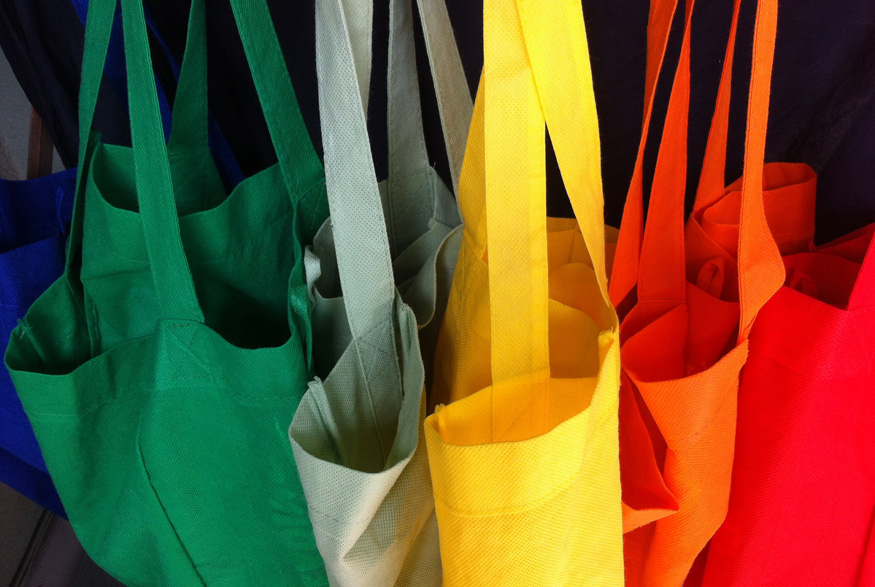
Get Reusable Shopping Bags
More and more Canadian municipalities are now banning single-use plastic shopping bags, while others are charging for them. Get into the habit of reusing plastic bags, or opt for the tote bag varieties.
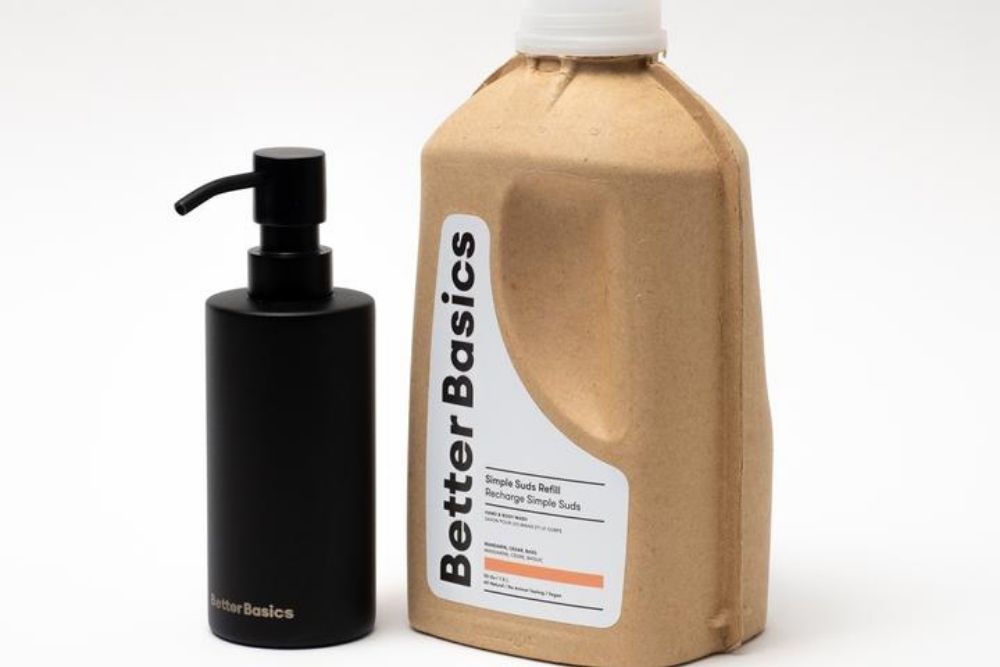
Use Online Refill Delivery Services
Eco-friendly refillery markets are popping up all over the country. Don’t have one in your area? Fear not! Check out the Set It & Forget It delivery program from Vancouver-based company Better Basics. They offer a line of refill cleaning and personal care products delivered right to your front door, across North America, which makes transitioning to a plastic-free household easy.

Reuse Milk Bags
suggests several ways in which you can reuse plastic milk bags, from freezing food in them to transforming them into grow bags for small plants. Why do we drink milk out of a bag anyway? Get the backstory here.
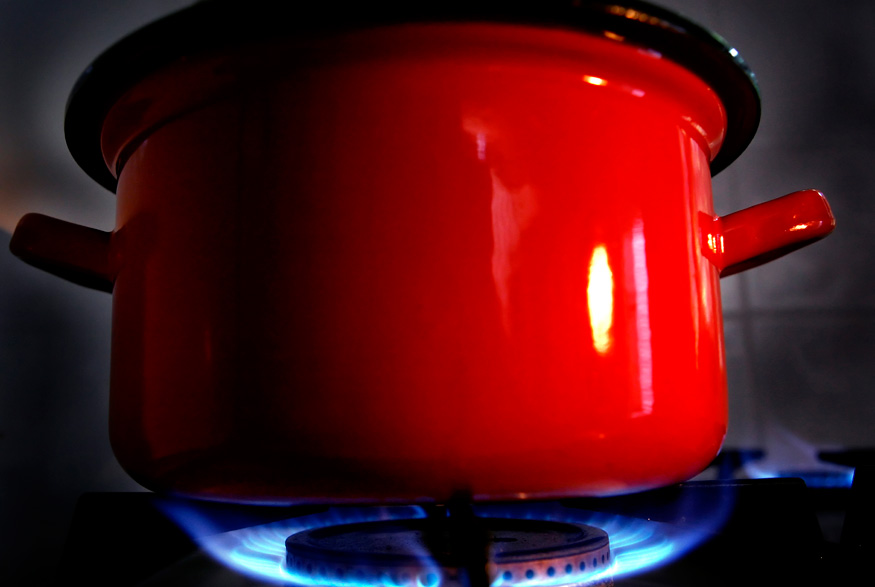
Match the Pot to the Burner
When cooking, use a burner that’s smaller than the size of your pot. This way, you’ll use the heat more efficiently and produce less energy. Find more easy ways to make your home energy efficient.
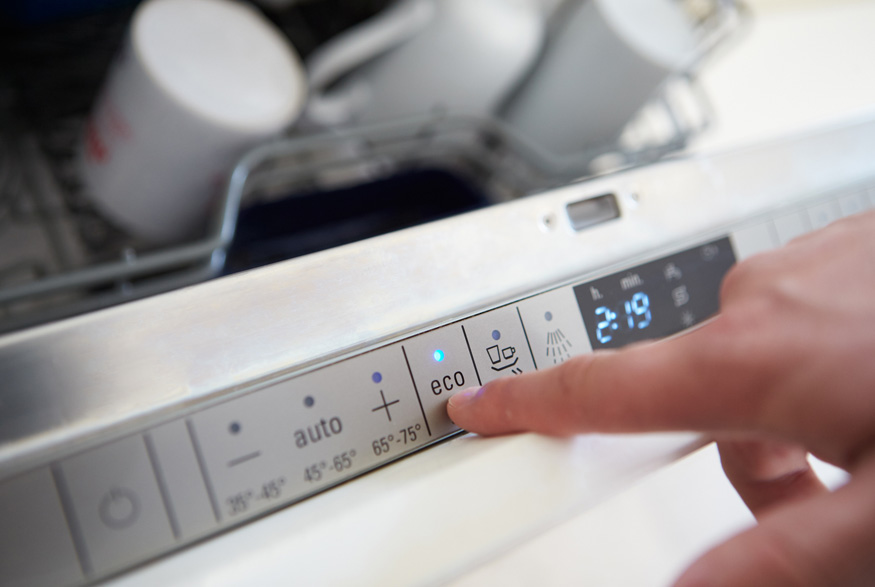
Get an Energy-Efficient Dishwasher
says that an Energy Star-certified dishwasher uses an average of 12 per cent less energy than a standard model. This means even more savings on your hydro bill, in addition to helping the planet. You can also check out these surprising things you can (and cannot) wash in your dishwasher.

Go Digital
Use your laptop for more than just scrolling through social media and watching cat videos. Reduce your paper usage by going online to read the news, submit your taxes and purchase e-tickets.
Related: These Eco-Friendly Beeswax-Covered Food Wraps Are So Simple to Make
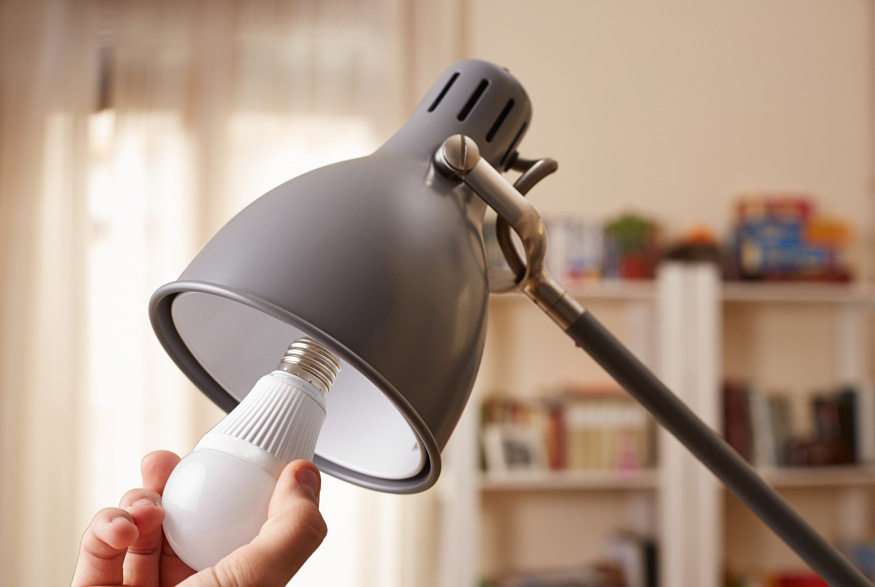
Opt for Energy-Saving Light Bulbs
According to Natural Resources Canada, Energy Star-certified light bulbs use between 70 and 90 per cent less energy on average than conventional incandescent bulbs. In addition, LED lights last 15 times longer.
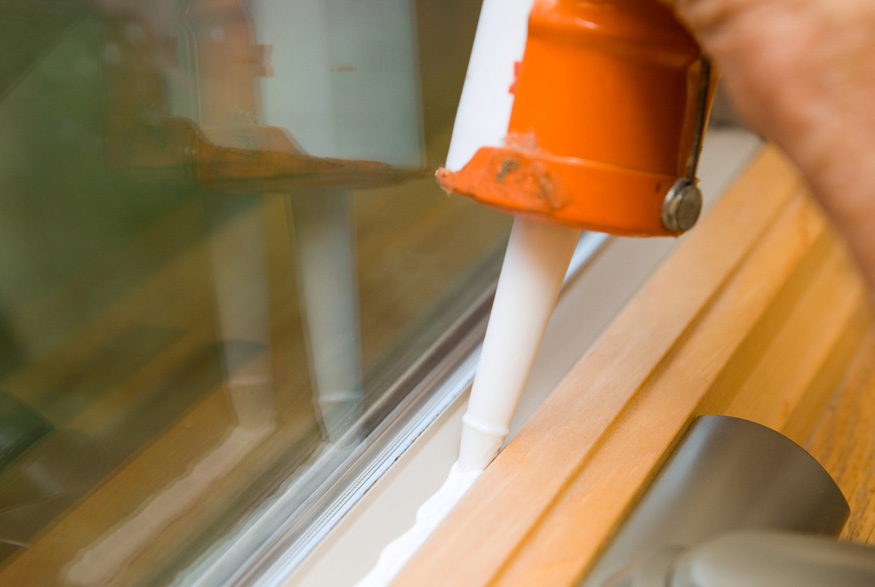
Weather-Strip and Caulk
Proper weather-stripping and caulking around your windows and doors will keep your house cool in the summer and warm in the winter, reducing the demand for air-conditioning or heating. This will cut your energy usage by as much as 25 per cent. Check out our ultimate household maintenance checklist for more ideas.

Use (or Make!) Natural Detergents
The harsh chemicals in many conventional detergents can wreak havoc on the environment, especially when they seep into lakes and rivers. Opt for a natural and biodegradable detergent instead, such as a multi-purpose variety that effectively cleans clothes, dishes and more. Or, better yet, try these DIY all-natural cleaning products and air fresheners you can make at home.
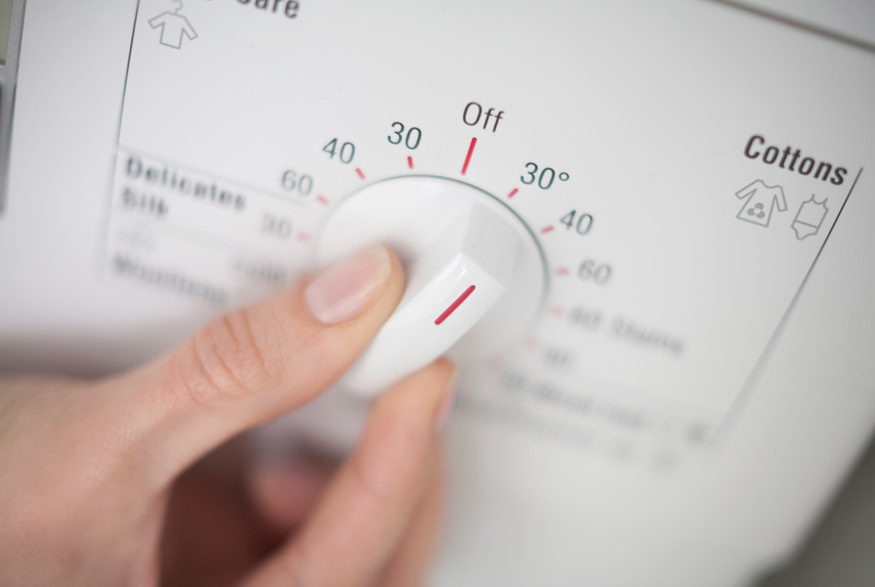
Get an Energy-Efficient Laundry Machine
According to Natural Resources Canada, an Energy Star-certified washing machine uses, on average, 25 per cent less energy and 40 per cent less water than a standard model. Not only will this reduce your carbon and water footprints, it will also help you save a significant amount on your hydro bill each month.

Wash Full Loads
Instead of washing a small load of laundry or dishes every day, wait a few days and then tackle one large load. After a while, you’ll notice a dip on your energy bill.
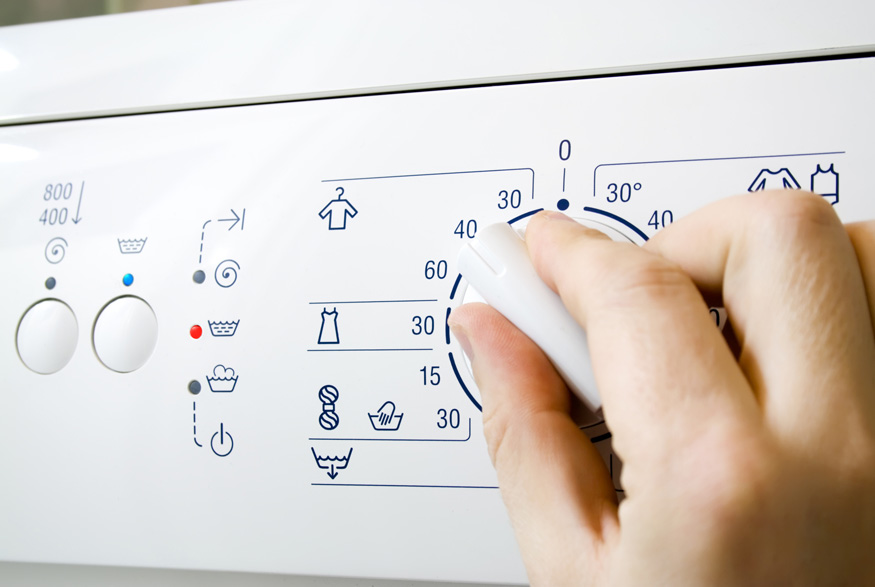
Wash in Cold Water
You can save energy by using a cold-water cycle for your washing machine or dishwasher. If you prefer warm water, opt for a lukewarm setting.
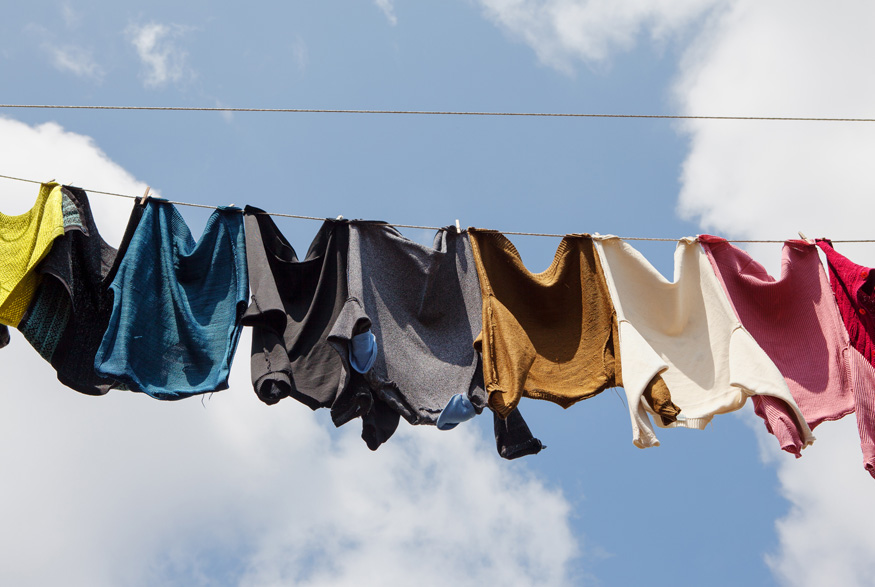
Hang Clothes to Dry
Instead of using an energy-guzzling dryer, hang your wet laundry on the line and let nature dry it for free. The sun also acts as a disinfectant to help ward off germs. (Buy a handy indoor drying rack for the chilly winter months.)

Install Savvy Bathroom Fixtures
An energy-efficient, low-flow shower head uses less than half the water of its conventional counterpart. Tap aerators also cut water usage in half without compromising water pressure.
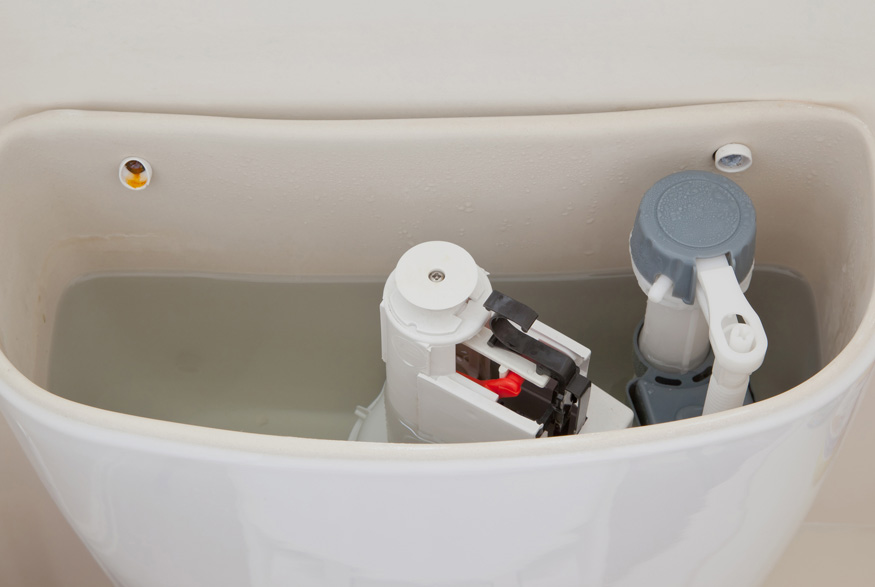
Put a Bottle of Water in the Toilet Tank
According to a McGill University study, Canadians are among the world’s largest per-capita consumers of water, and 30 per cent of what they use literally goes down the toilet through flushing. One solution? Fill a plastic bottle with water and place it in your toilet’s cistern. This makes the water level in the cistern rise while actually using less water every time you flush.

Turn Temps Down
You can reduce your energy usage by turning down the heat or air-conditioning. Remember: there’s no need to heat or cool a room when you’re not spending time in it.
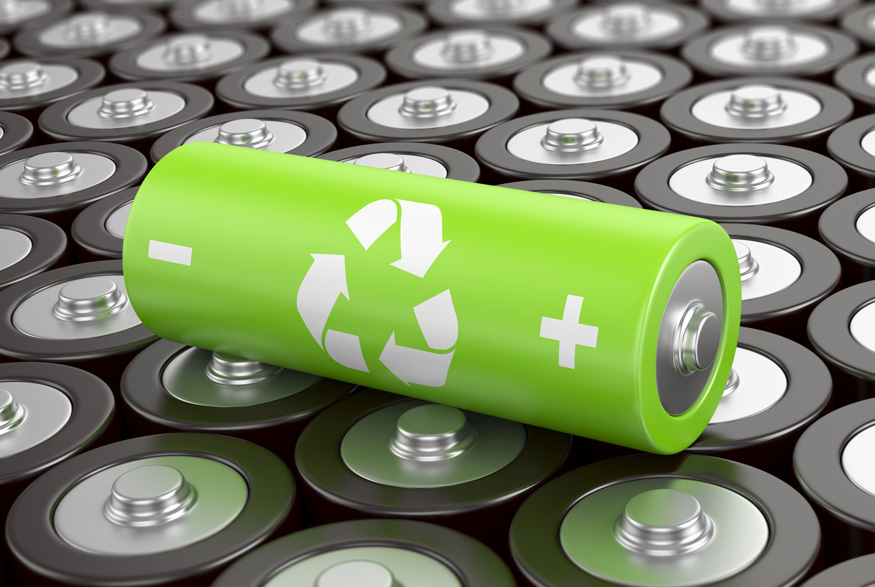
Use Batteries Wisely
Batteries are filled with toxic metals that are an environmental hazard. When you have to use them, choose the rechargeable variety. Once their lifespan has ended, contact a recycling program such as Call2Recycle to find out how to dispose of them responsibly.
HGTV your inbox.
By clicking "SIGN UP” you agree to receive emails from HGTV and accept Corus' Terms of Use and Corus' Privacy Policy.





